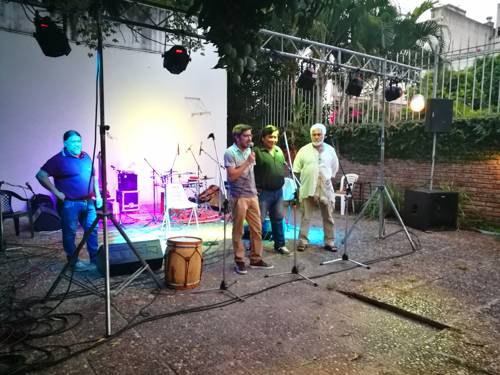
FAQ About The Impact of Indigenous Languages in Contemporary Music

What is the significance of incorporating indigenous languages in contemporary music?
Incorporating indigenous languages into contemporary music is significant because it plays a vital role in preserving and revitalizing these languages, many of which are endangered. This practice raises awareness of linguistic diversity and cultural heritage, fostering appreciation and respect for indigenous cultures. Additionally, it allows for artistic expression that bridges traditional and modern storytelling.

Which contemporary musicians are known for using indigenous languages in their music?
Several contemporary musicians are known for integrating indigenous languages into their music. Notable examples include Tanya Tagaq, who uses throat singing from the Inuit tradition, and Elisapie, who incorporates Inuktitut into her songs. In Australia, musician Emily Wurramara sings in both English and Anindilyakwa.

How does the use of indigenous languages in music influence cultural preservation?
Utilizing indigenous languages in music aids cultural preservation by keeping the language alive in public consciousness and making it accessible to broader audiences. It encourages younger generations to learn and appreciate their linguistic heritage, strengthening cultural identity and continuity.

Are there any challenges artists face when incorporating indigenous languages in their music?
Artists may face challenges such as language barriers, the risk of misrepresentation, and the need for cultural sensitivity. They must ensure they have the permission and understanding required to accurately and respectfully use the languages. Collaborating with native speakers and cultural advisors can help mitigate these issues.

Can the fusion of indigenous languages and contemporary music be commercially successful?
Yes, the fusion of indigenous languages with contemporary music can achieve commercial success, although it often depends on market dynamics and audience exposure. Artists like A Tribe Called Red and Sho Madjozi have gained international acclaim, proving that there's a growing audience interested in culturally diverse music.

How does the use of indigenous languages impact the music industry?
The use of indigenous languages in music enriches the industry by adding unique sounds and cultural perspectives. It expands the audience's musical experience and challenges industry norms, potentially leading to new genres and collaborative opportunities. This inclusion also encourages more diverse representation within the music industry.

What are some genres where indigenous languages are most frequently used?
Indigenous languages are often incorporated into genres such as folk, world music, hip-hop, and electronic music. These genres typically offer flexibility for linguistic experimentation and blending traditional influences with contemporary sounds.

Are there any educational resources or platforms promoting indigenous languages through music?
Yes, there are several educational platforms and initiatives that focus on promoting indigenous languages through music. Programs like the Australian Indigenous Languages and Arts program and the Amazonian Festival of Indigenous Music showcase how music can be a tool for educational outreach and cultural sharing.

What is one impact of using indigenous languages in music beyond cultural preservation?
Beyond cultural preservation, using indigenous languages in music can foster cross-cultural dialogue and mutual understanding. It acts as a medium for storytelling that transcends language barriers, allowing people from different backgrounds to connect emotionally and intellectually through shared human experiences.

How do indigenous communities perceive the use of their languages in contemporary music?
Perceptions can vary widely among indigenous communities. Some view it as a positive means of cultural expression and preservation, while others may feel reservations about commercialization and appropriation. Respectful collaboration and acknowledgment of the communities' contributions are key to maintaining positive perceptions.

Does the use of indigenous languages in music differ across regions?
Yes, the use of indigenous languages in music can vary significantly across regions due to differing cultural contexts, languages, and musical traditions. Artists tailor their approach to reflect local histories and contemporary issues, leading to a diverse array of musical styles and themes.

What role do indigenous artists play in the promotion of their languages through music?
Indigenous artists play a crucial role in promoting their languages through music by using their platforms to showcase linguistic and cultural diversity. They often serve as cultural ambassadors, educating wider audiences and instilling pride within their communities for their heritage and traditions.

How do contemporary technologies impact the use of indigenous languages in music?
Contemporary technologies, such as digital recording, social media, and streaming platforms, have significantly impacted the use of indigenous languages in music by providing greater accessibility and reach. These technologies enable artists to distribute their music globally, fostering a wider appreciation of indigenous cultures.

Why is it important for non-indigenous audiences to engage with music in indigenous languages?
It is important for non-indigenous audiences to engage with music in indigenous languages as it promotes cultural understanding and respect. Exposure to different languages and perspectives enriches multicultural dialogue and reduces stereotypes, fostering a more inclusive society.

How do collaborations between indigenous and non-indigenous artists work?
Collaborations between indigenous and non-indigenous artists typically involve mutual respect and a shared vision. These partnerships often require cultural sensitivity and open communication to ensure that the indigenous languages and elements are accurately and respectfully represented.

What examples are there of indigenous languages being used in mainstream music festivals?
Indigenous languages have been featured in mainstream music festivals such as WOMAD (World of Music, Arts and Dance) and Glastonbury, where artists perform using traditional languages as part of their sets. These festivals celebrate cultural diversity and bring indigenous music to larger audiences.

How is the authenticity of indigenous language use ensured in contemporary music?
Ensuring the authenticity of indigenous language use in music involves consultation and collaboration with native speakers and cultural experts. Artists often engage with community leaders and linguists to verify translations and adhere to cultural norms, ensuring respectful and accurate representation.

Can the use of indigenous languages in music help in language revitalization efforts?
Yes, music can be a powerful tool for language revitalization by increasing usage and motivation to learn among younger audiences. When indigenous languages are featured prominently in popular media, they are perceived as more valuable and relevant, encouraging active preservation efforts.

What is the future outlook for indigenous languages in contemporary music?
The future of indigenous languages in contemporary music appears promising, as global interest in cultural diversity continues to grow. As more artists explore and embrace these languages, they contribute to both their sustenance and the evolution of musical landscapes, potentially leading to innovative artistic expressions.

How can music educators incorporate indigenous languages into their curriculum?
Music educators can incorporate indigenous languages into their curriculum by exploring and teaching songs that feature these languages, inviting indigenous artists for workshops, and including discussions on cultural contexts and language diversity. This approach enriches students' understanding of global cultures and fosters inclusivity.
